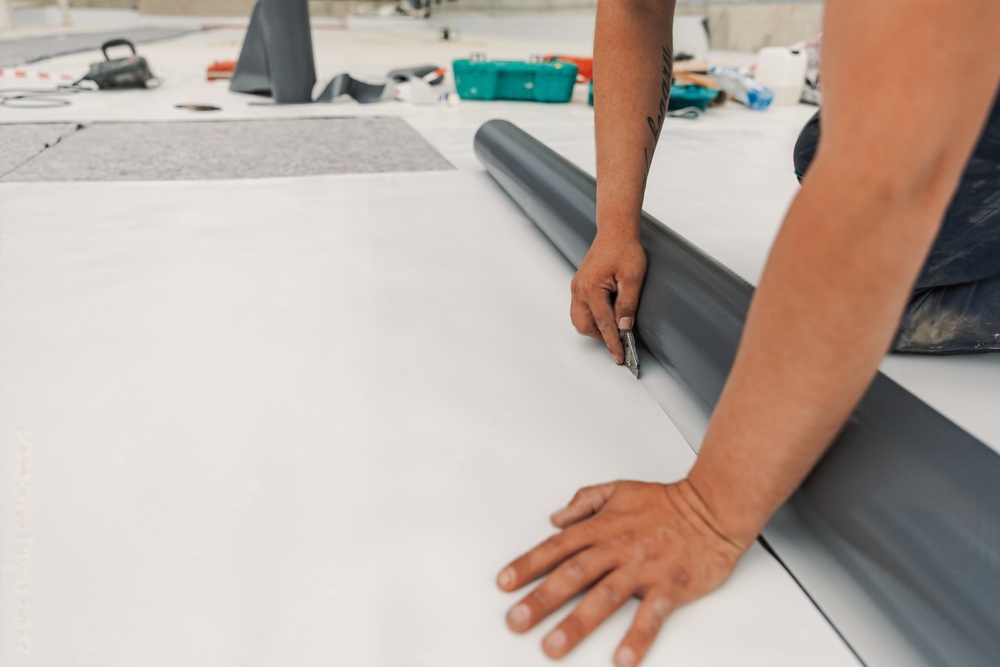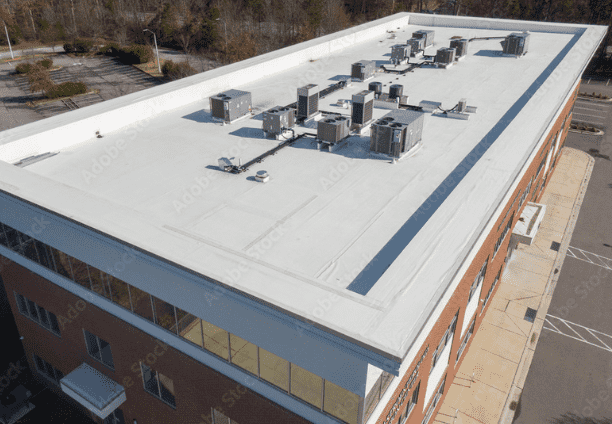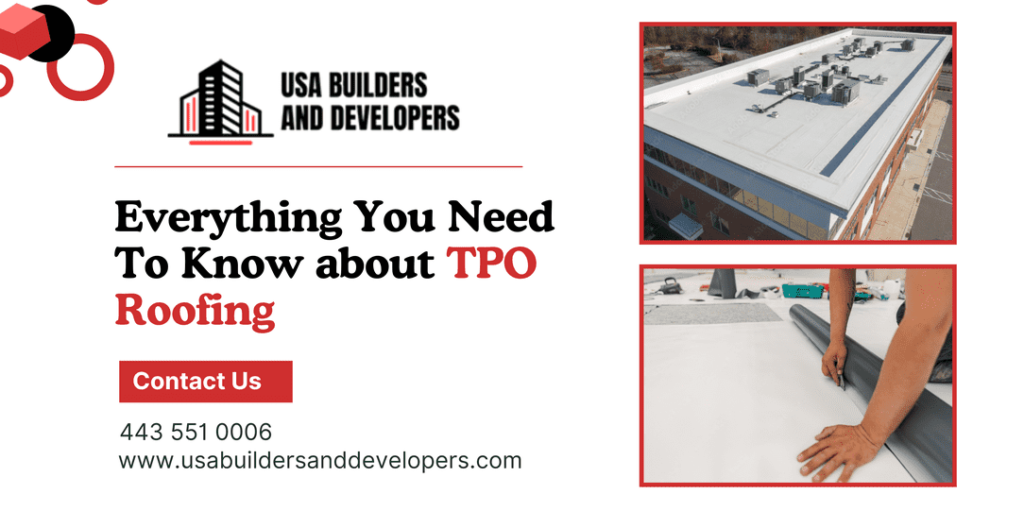When it comes to flat and low-slope roofing, one of the most popular choices today is TPO roofing. But what exactly is TPO roofing, and why is it becoming a preferred solution for commercial and residential flat roofs?
In this article, we will explain what is TPO roofing, its benefits, installation process, maintenance tips, and whether it is the right choice for your property.
What Is TPO Roofing?
TPO stands for Thermoplastic Polyolefin, a single-ply roofing membrane made from a combination of rubber, plastic, and other synthetic materials. It is designed to provide durability, weather resistance, and energy efficiency, especially for flat or low-slope roofs that are common in commercial, industrial, and modern residential buildings.
In simple terms, TPO roofing is a waterproof, reflective, and flexible membrane that forms a protective layer over your roof. Its lightweight construction makes it easier to handle and install than some traditional roofing systems, while still offering long-term performance.
How TPO Roofing Is Made
To understand what is TPO roofing, it helps to know how it’s manufactured. TPO roofing membranes are made in large sheets or rolls, usually 10 to 20 feet wide. These sheets are laid over the roof and joined using heat-welded seams, creating a strong, watertight barrier.
The structure of TPO roofing includes three key layers:
| Layer | Purpose |
|---|---|
| Base Layer | Reinforced with polyester or fiberglass for strength and flexibility |
| Middle Layer | The thermoplastic polyolefin layer provides durability and resistance to UV rays |
| Top Layer | Reflective surface designed to reduce heat absorption and improve energy efficiency |
This layered structure ensures that TPO roofs are durable, lightweight, and long-lasting, even under extreme weather conditions.


Benefits of TPO Roofing
TPO roofing offers several advantages that make it a preferred choice for many property owners. Here are the key benefits:
1. Energy Efficiency
TPO membranes are usually white or light-colored, which allows them to reflect sunlight instead of absorbing it. This reflective property helps reduce cooling costs, keeping your building cooler during hot months. Energy-efficient roofing is also beneficial for sustainability and lowering your overall utility bills.
2. Cost-Effective
Compared to other single-ply roofing options like PVC or EPDM, TPO is typically more affordable. It provides the durability and weather resistance of high-end materials while remaining budget-friendly for both commercial and residential projects.
3. Durable and Long-Lasting
TPO roofing is highly resistant to tears, punctures, and chemical damage. Its ability to withstand extreme weather conditions, UV exposure, and rain ensures that your roof remains strong and functional for decades. Properly installed and maintained TPO roofing can last 20–30 years.
4. Eco-Friendly
Many TPO membranes are fully recyclable, making them an environmentally conscious choice. In addition, their reflective properties reduce energy consumption, which can help lower your building’s carbon footprint.
5. Easy Installation
TPO membranes are lightweight and flexible, making them easier and faster to install than many other flat roofing materials. This reduces labor costs and installation time, providing a more efficient roofing solution.
6. Low Maintenance
Unlike some roofing systems that require frequent repairs or treatments, TPO roofs require minimal maintenance. Regular inspections and simple cleaning are usually enough to keep the roof in good condition.
TPO Roofing vs. Other Roofing Materials
To fully understand what is TPO roofing, it helps to compare it with other common flat roofing materials:
| Feature | TPO Roofing | EPDM Roofing | PVC Roofing |
|---|---|---|---|
| Material Type | Thermoplastic Polyolefin | Synthetic Rubber | Polyvinyl Chloride |
| Color Options | Mostly white, reflective | Usually black | White or gray |
| Energy Efficiency | High | Moderate | High |
| Seam Type | Heat-welded | Adhesive | Heat-welded |
| Durability | High | Moderate | High |
| Cost | Moderate | Lower | Higher |
| Chemical Resistance | Good | Moderate | Excellent |
TPO roofing provides a balance between affordability, durability, and energy efficiency, making it an ideal choice for many building owners.
How TPO Roofing Is Installed
Installation of TPO roofing should always be done by experienced roofing professionals. Here is a step-by-step overview of the installation process:
- Roof Preparation – The existing roof is cleaned, repaired, and prepared for the new membrane.
- Insulation Layer – A layer of insulation, such as polyiso or EPS, is added to improve thermal performance.
- Membrane Placement – TPO sheets are rolled out across the roof.
- Seam Welding – Heat-welding machines are used to fuse the edges of each sheet, creating a watertight barrier.
- Edge Sealing & Finishing – Flashings, edges, and penetrations are sealed to prevent leaks and ensure durability.
Proper installation ensures the roof performs efficiently and lasts for decades. Poor installation, however, can lead to leaks, seam failure, or premature wear.
Maintenance Tips for TPO Roofing
While TPO roofs are low-maintenance, following these steps will help extend their lifespan:
- Inspect the roof at least twice a year, especially after storms.
- Remove debris, leaves, and dirt to prevent water pooling.
- Check seams and flashing for signs of damage.
- Schedule professional inspections to detect small issues before they become major problems.
With consistent maintenance, a TPO roof can provide decades of reliable service.
Lifespan of TPO Roofing
TPO roofing can last 20–30 years or longer when installed correctly and maintained regularly. Its UV resistance, chemical resistance, and reflective properties help protect the membrane from weathering and premature degradation.
Regular inspections and preventative maintenance play a critical role in achieving the maximum lifespan of a TPO roof.
Final Thoughts
So, what is TPO roofing? It’s a modern, single-ply roofing membrane that offers excellent durability, energy efficiency, and cost-effectiveness. From commercial buildings to low-slope residential roofs, TPO provides a long-lasting, low-maintenance roofing solution.
If you’re considering a new flat roof or planning to replace an aging roof, TPO should be on your list of options. With proper installation and care, this roofing system can protect your property, reduce energy costs, and offer peace of mind for decades.
Have Questions? Call Us Now!
We’re here to help—quick answers, friendly service, anytime you need!

